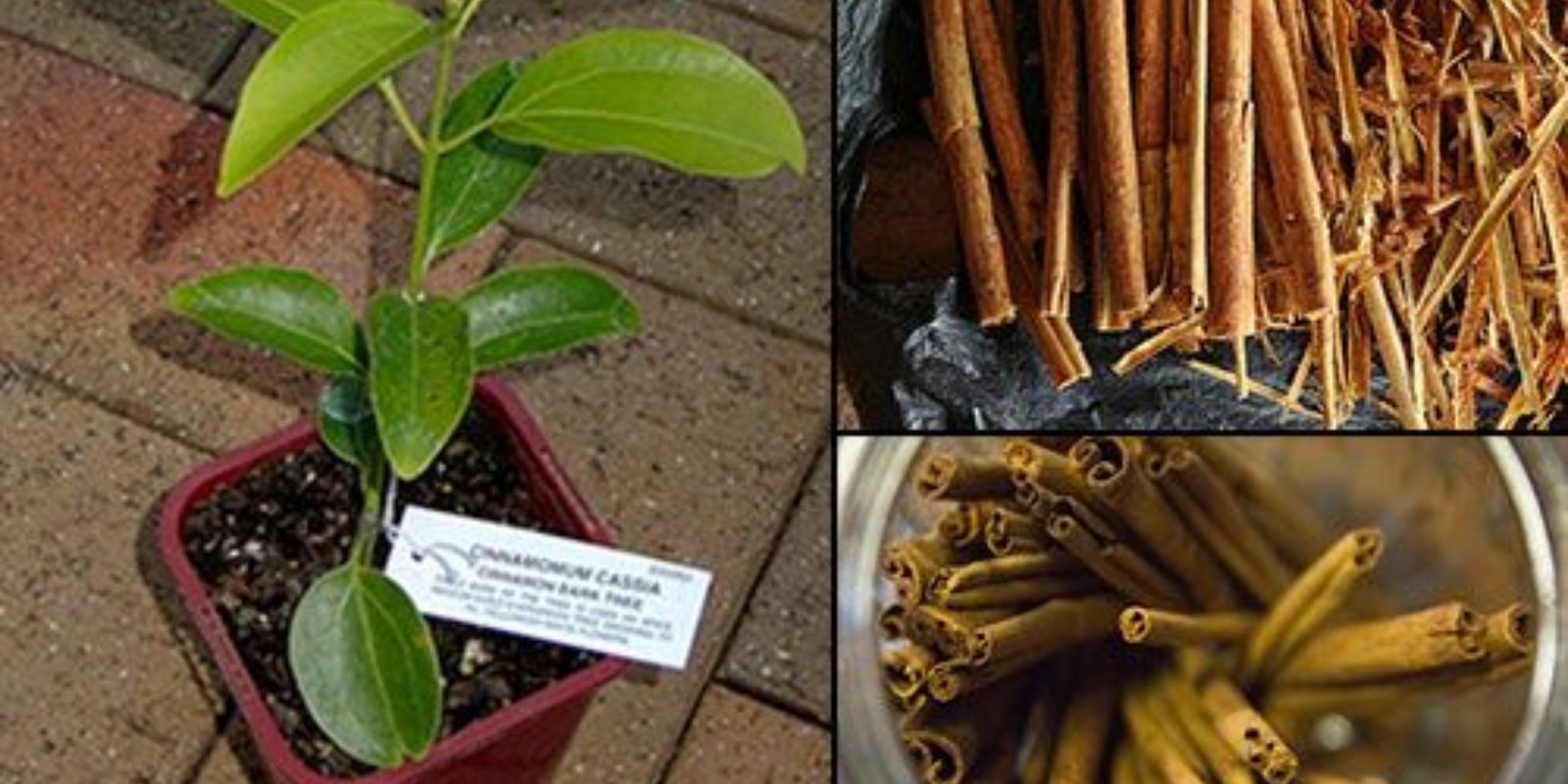Cinnamon isn’t just a staple in the spice cabinet—it’s a plant that can add a touch of the exotic to your garden or home. Whether you’re a gardening enthusiast or simply want to enjoy the satisfaction of growing your own cinnamon, cultivating a cinnamon tree is easier than you think. This article will guide you step by step, from choosing the right seeds to harvesting your very own cinnamon bark.
1. What is a Cinnamon Tree?
Cinnamon trees belong to the genus Cinnamomum, with Cinnamomum verum being the true cinnamon variety native to Sri Lanka and southern India. It’s an evergreen tree with glossy leaves, delicate flowers, and a warm, spicy aroma that comes from its bark. While it thrives in tropical climates, cinnamon can also be grown in pots indoors or outdoors in the right conditions.
2. Benefits of Growing Cinnamon at Home
- Fresh Supply of Cinnamon: Grow your own bark for a fresher and more aromatic spice.
- Aesthetic Value: Cinnamon trees are visually appealing, with lush foliage and fragrant leaves.
- Eco-Friendly: Reduce reliance on store-bought cinnamon, often harvested unsustainably.
- Multi-Purpose Plant: The leaves can be used for tea, and the bark is a prized spice.
3. Getting Started: Choosing Seeds or Saplings
To grow a cinnamon tree, you’ll need either:
- Seeds: Obtain fresh cinnamon seeds from a reputable source. They lose viability quickly, so plant them soon after purchase.
- Saplings: A young cinnamon sapling is a quicker option and ideal for beginners.
4. Preparing the Soil
Cinnamon trees prefer:
- Well-Draining Soil: Combine equal parts sand, peat moss, and garden soil for optimal drainage.
- Slightly Acidic to Neutral pH: Aim for a soil pH between 6 and 7. Test the soil if needed and amend it with organic matter.
5. Planting Your Cinnamon Tree
- If Using Seeds: Soak the seeds in water overnight to speed up germination. Plant them 1 inch deep in moist soil and keep the pot in a warm location with indirect sunlight.
- If Using a Sapling: Choose a pot with good drainage and plant the sapling at the same depth as its original container. Ensure the root ball is covered but not compacted.
6. Providing the Right Conditions
Cinnamon trees are native to tropical climates, so replicating these conditions is key:
- Temperature: Keep the temperature between 70°F–90°F (21°C–32°C). Protect the tree from frost if growing outdoors in cooler climates.
- Light: Place the tree in bright, indirect sunlight. If indoors, position it near a south-facing window.
- Humidity: High humidity is essential. Mist the leaves regularly or place a tray of water near the plant to maintain moisture levels.
7. Watering and Feeding
- Watering: Keep the soil consistently moist but avoid waterlogging, which can cause root rot. Water less frequently during the dormant season.
- Fertilizing: Use a balanced organic fertilizer every 6-8 weeks during the growing season (spring and summer). Avoid over-fertilizing, as this can damage the roots.
8. Caring for Your Cinnamon Tree
- Pruning: Prune the tree annually to remove dead or weak branches. This encourages healthy growth and a better harvest.
- Repotting: If growing in a pot, repot the tree every 2-3 years to provide fresh soil and room for growth.
9. Harvesting Cinnamon Bark
Harvesting cinnamon is a rewarding experience:
- When to Harvest: Wait until the tree is at least 2-3 years old.
- How to Harvest: Cut a small branch, scrape off the outer bark, and peel away the inner bark. The inner bark will curl as it dries, forming the familiar cinnamon sticks.
10. Common Challenges and Solutions
- Pest Infestations: Watch for scale insects or aphids. Treat with insecticidal soap or neem oil.
- Overwatering: Ensure proper drainage to prevent root rot.
- Slow Growth: Check for nutrient deficiencies and adjust fertilizer as needed.
11. Tips for Success
- Start Small: If you’re new to growing tropical plants, begin with a sapling.
- Use Mulch: Mulching helps retain soil moisture and regulate temperature.
- Experiment with Leaves: Cinnamon leaves can be used to make tea or flavor curries, offering an additional benefit while you wait for bark harvests.
12. Why Grow Cinnamon?
Cultivating a cinnamon tree is not just about the spice; it’s about connecting with nature, reducing your environmental footprint, and enjoying the satisfaction of growing something extraordinary. Imagine the aroma of freshly harvested cinnamon bark filling your home—an experience store-bought spices can’t match.
Conclusion
Growing a cinnamon tree at home is an exciting journey that combines beauty, sustainability, and practicality. With the right care and attention, your cinnamon tree will thrive, providing you with a unique spice and a deeper appreciation for nature.
💬 What do you think about growing cinnamon at home? Share your thoughts or questions below!
#GrowCinnamon #HomeGardening #SpiceGarden #DIYPlants #TropicalGardening #SustainableLiving

